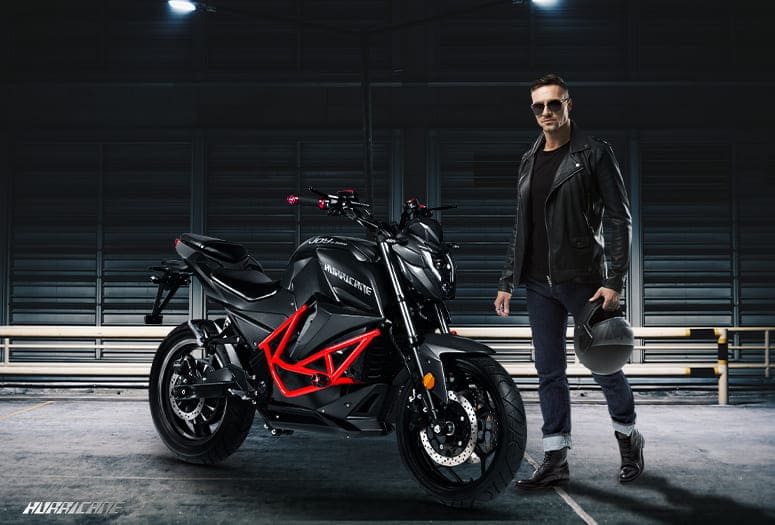Why electric vehicles will take over sooner than you think
Many of the industry’s most prominent researchers believe that we have passed the point where electric vehicles will quickly outnumber gasoline and diesel vehicles in terms of sales.
Many governments around the world are even setting targets to prohibit the sale of gasoline and diesel vehicles. The end of the internal combustion engine, however, is unavoidable due to a technological revolution. And technological revolutions tend to occur at a tremendous speed. The internet, like all successful new technologies, did not take a straight path to global dominance. It did not evolve gradually, giving us all time to prepare.
Should you buy an electric vehicle as your next vehicle? The answer may be determined by considering many factors like initial purchase cost, cost of running the vehicle, maintenance charges and much more.
As researchers improve the batteries that power them, the vehicles improve and become more affordable. Here’s a checklist to help you decide how an electric vehicle is right for you.
Deal with the myth of distance
The first thing to understand about electric vehicles is that they can travel more than enough miles for you on a single charge, even if you live in the middle of nowhere. Of course, your driving style and how much you use the vehicles other amenities like USB chargung, will surely have an impact on your range.
One of the most appealing aspects of electric vehicles to many people is their lower adverse impact on the environment.
Electricity sources for a local utility vary across the country; some areas rely heavily on coal-fired power plants, while others rely more heavily on solar or wind energy.
While we claim that electric vehicles emit no direct emissions, many people are concerned about the manufacturing process for the batteries used in electric vehicles, which emits more pollution than conventional vehicle production. Concerns have been raised about recycling or disposing of old batteries. But considering the EVs have zero direct emissions, the effective emissions caused by EVs still remain very low in comparison to traditional fuel-driven vehicles.
According to prevailing opinion, electric vehicles will continue to be a niche product for many years, troubled by high prices and heavily reliant on government subsidies.
The researchers predict that between 2025 and 2030, plug-in vehicles will be cost-competitive with traditional petroleum-powered vehicles, even without subsidies and before accounting for fuel savings. Once that occurs, mass adoption should occur quickly.
Batteries Provide a Boost
Plug-in vehicles accounted for less than 1% of new passenger vehicle sales worldwide last year, owing to high upfront costs. The increased battery production in massive factories optimises the design of battery packs.
According to the research, EVs will continue to rely on government incentives for the next decade. Electric cars will be able to stand on their own as automakers introduce a wider range of models at lower prices.
Nonetheless, this outcome is far from certain. Battery manufacturers may face material shortages or production issues, limiting their ability to cut costs.
Analysts predict that electric vehicles will account for one-quarter of new vehicle sales by 2035. However, only 13% of vehicles on the road would be electric at that time.
Why? Because older vehicles can last for a decade or two.

Governments and automakers around the world are focusing on selling newer, cleaner electric vehicles as a key solution to climate change. However, it could be years, if not decades, before the technology has a significant impact on greenhouse gas emissions.
One of the reasons for this? All of the existing gasoline-powered vehicles on the road will take a long time to reach the end of their useful lives.
Furthermore, some economic research suggests that if major ICE automakers phased out sales of new internal combustion engines, older gasoline-powered cars may remain on the road for even longer, as consumers unable to afford newer, more expensive electric vehicles instead turn to cheaper used models and drive them more.
As a result, policymakers may need to consider additional strategies to clean up transportation, as suggested by the experts. This could include policies that buy back and scrap older, less efficient cars that are already on the road. It could also include strategies to reduce reliance on private vehicle travel, such as increasing public transportation or encouraging e-biking and walking so that existing ICE vehicles are driven less frequently.
A multitude of shifting consumer attitudes, ambitious climate-focused regulations, and technological advancements is poised to forever modify the landscape of vehicle purchasing. While the automotive industry has begun to fully embrace the transition to electrification, the impact of this massive shift is coming sooner than many anticipated. This new outlook has implications for governments and energy industries in terms of infrastructure, electricity generation and storage, and foresight organisations are already using this data to help ensure a smooth transition to this new EV-dominated market, which will arrive much sooner than expected.
A brand-new market
As the global auto industry recovers from the effects of the COVID-19 pandemic, it will be met by a new group of EV buyers. According to research and analysis, many people who had previously rejected ownership in favour of ridesharing and public transportation have reconsidered their decision in the wake of the COVID-19 pandemic.
Almost one-third of non-car owners planned to buy a vehicle in the next six months (19% plan to buy new, 12% used), with millennials accounting for roughly half of those. Among both current vehicle owners and non-vehicle owners, 30% said they’d prefer a non-ICE (internal combustion engine) vehicle for their next purchase.


Post a Comment
You must be logged in to post a comment.